Governor Of The Spanish Netherlands on:
[Wikipedia]
[Google]
[Amazon]
The governor ( nl, landvoogd) or governor-general () of the
 , align="center",
, align="center",
(1451-1504) , align="center", 1501 , align="center", 1504 , align="center", / , align="center" rowspan="1",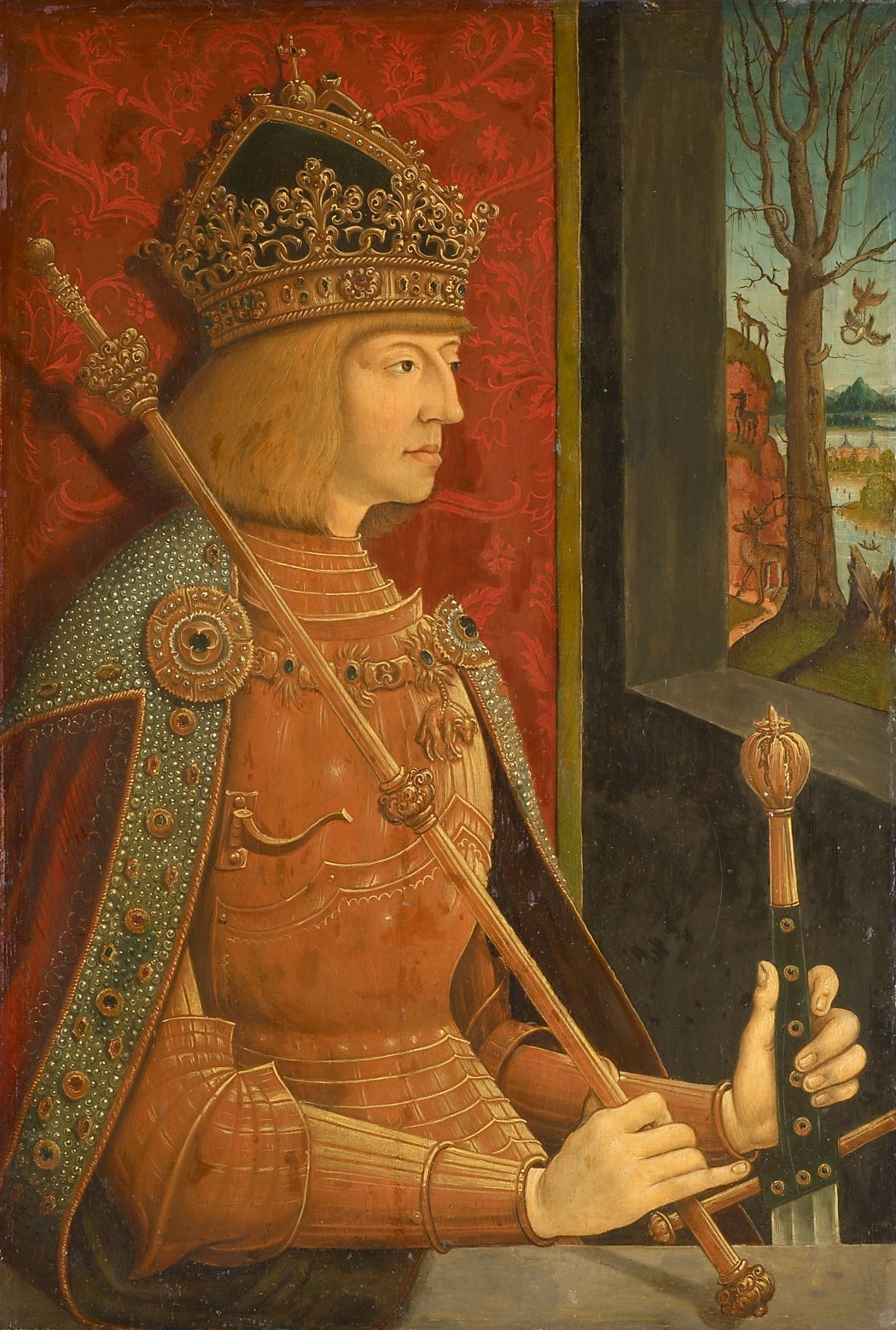
(1458-1521) , align="center", 1504 , align="center", 1507 , align="center", / , align="center" rowspan="2",
 Maximilian I for Charles of Ghent
, -
, align="center",
Maximilian I for Charles of Ghent
, -
, align="center",  , align="center", Margaret of Austria
, align="center", Margaret of Austria
(1480-1530) , align="center", 1507 , align="center", 1 December 1530
(death) , align="center", Aunt of Charles , - , align="center" colspan="6" , Charles became Duke of Burgundy in 1506 (emancipated in 1515), King of Spain and the Two Sicilies in 1516, Archduke of Austria and Holy Roman Emperor as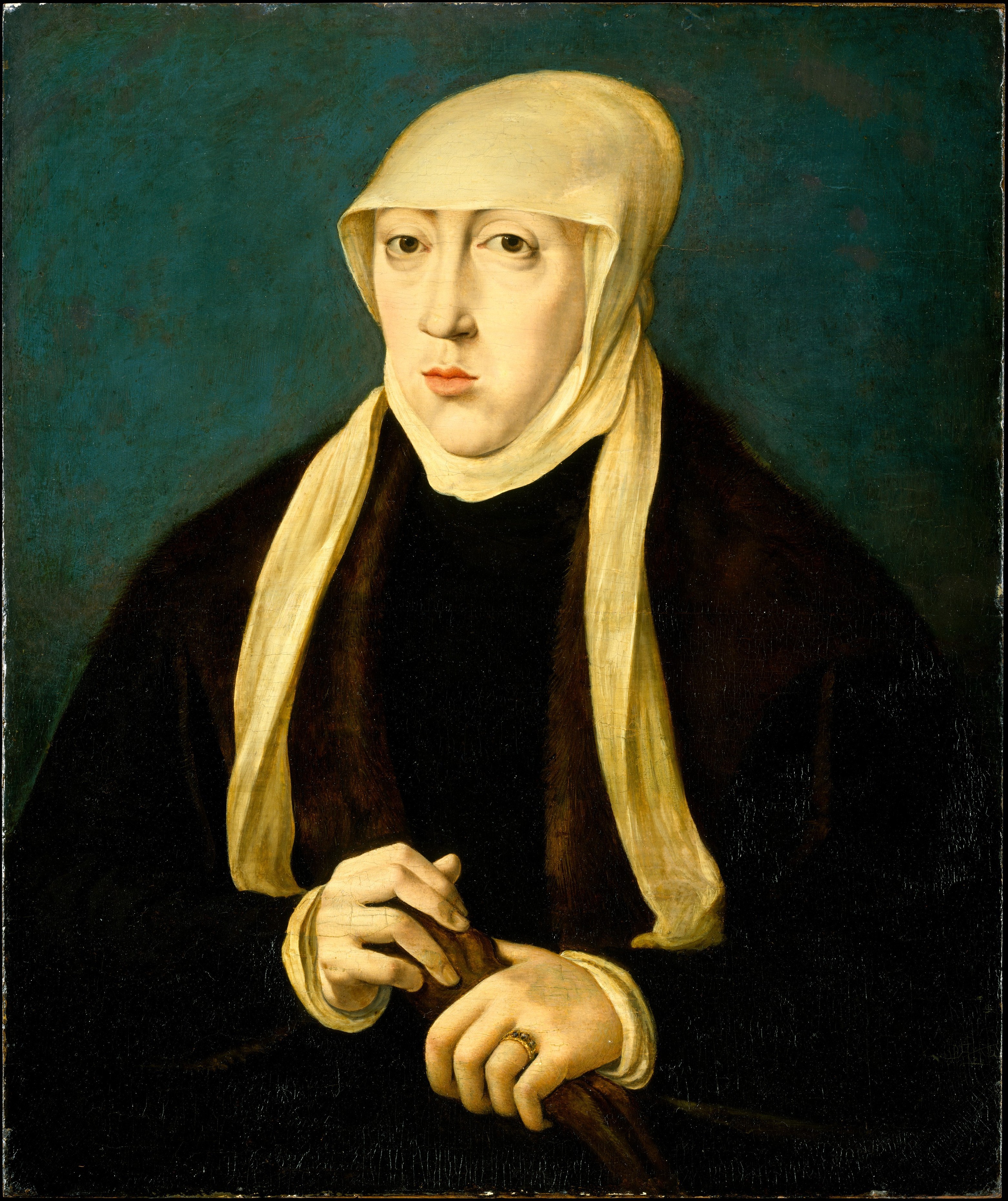 , align="center", Mary of Austria
, align="center", Mary of Austria
(1505-1558) , align="center", January 1531 , align="center", October 1555 , align="center", Sister , align="center" rowspan="1",
 , align="center", Emmanuel Philibert of Savoy
, align="center", Emmanuel Philibert of Savoy
(1528-1580) , align="center", 1555 , align="center", 1559 , align="center", Cousin of Philip , align="center" rowspan="1",
 Charles V for his son Philip.
, -
, align="center" colspan="6" , In 1556, Philip V, Duke of Burgundy, became king of Spain as
Charles V for his son Philip.
, -
, align="center" colspan="6" , In 1556, Philip V, Duke of Burgundy, became king of Spain as  , align="center",
, align="center",
(1522-1586) , align="center", 1559 , align="center", 1567 , align="center", Half-sister , align="center" rowspan="9",
 , align="center",
, align="center",
(1507-1582) , align="center", 1567 , align="center", 1573 , align="center", / , - , align="center", , align="center",
, align="center",
(1528-1576) , align="center", 1573 , align="center", 5 March 1576
(death) , align="center", / , - , align="center", , align="center",
, align="center",
(1547-1578) , align="center", 1576 , align="center", 1 October 1578
(death) , align="center", Half-brother , - , align="center", , align="center",
, align="center",
(1545-1592) , align="center", 1578 , align="center", 3 December 1592
(death) , align="center", Half-nephew , - , align="center", , align="center",
, align="center",
(1517-1604) , align="center", 1592 , align="center", 1594 , align="center", / , - , align="center",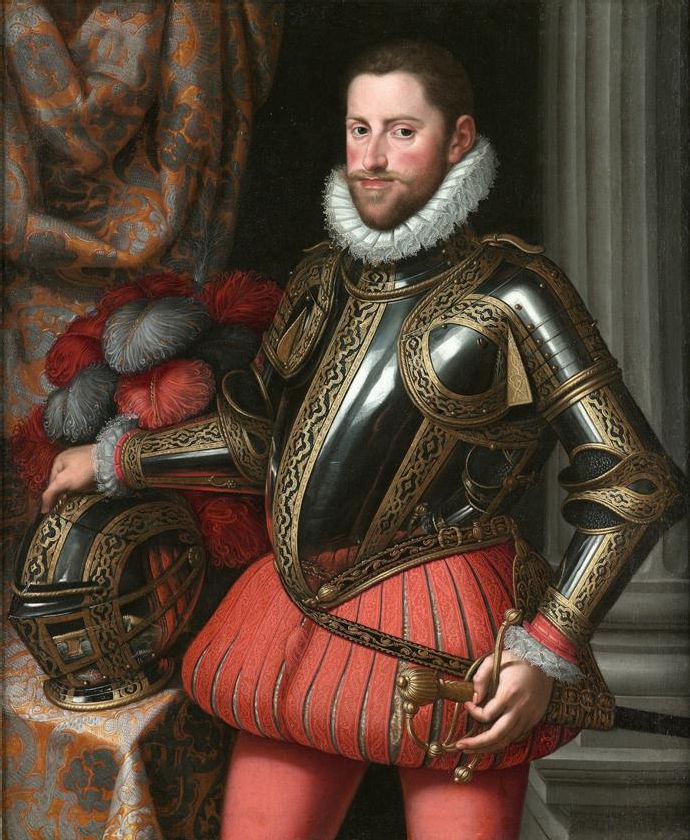 , align="center", Ernest of Austria
, align="center", Ernest of Austria
(1553-1595) , align="center", 1594 , align="center", 20 February 1595
(death) , align="center", Nephew , - , align="center",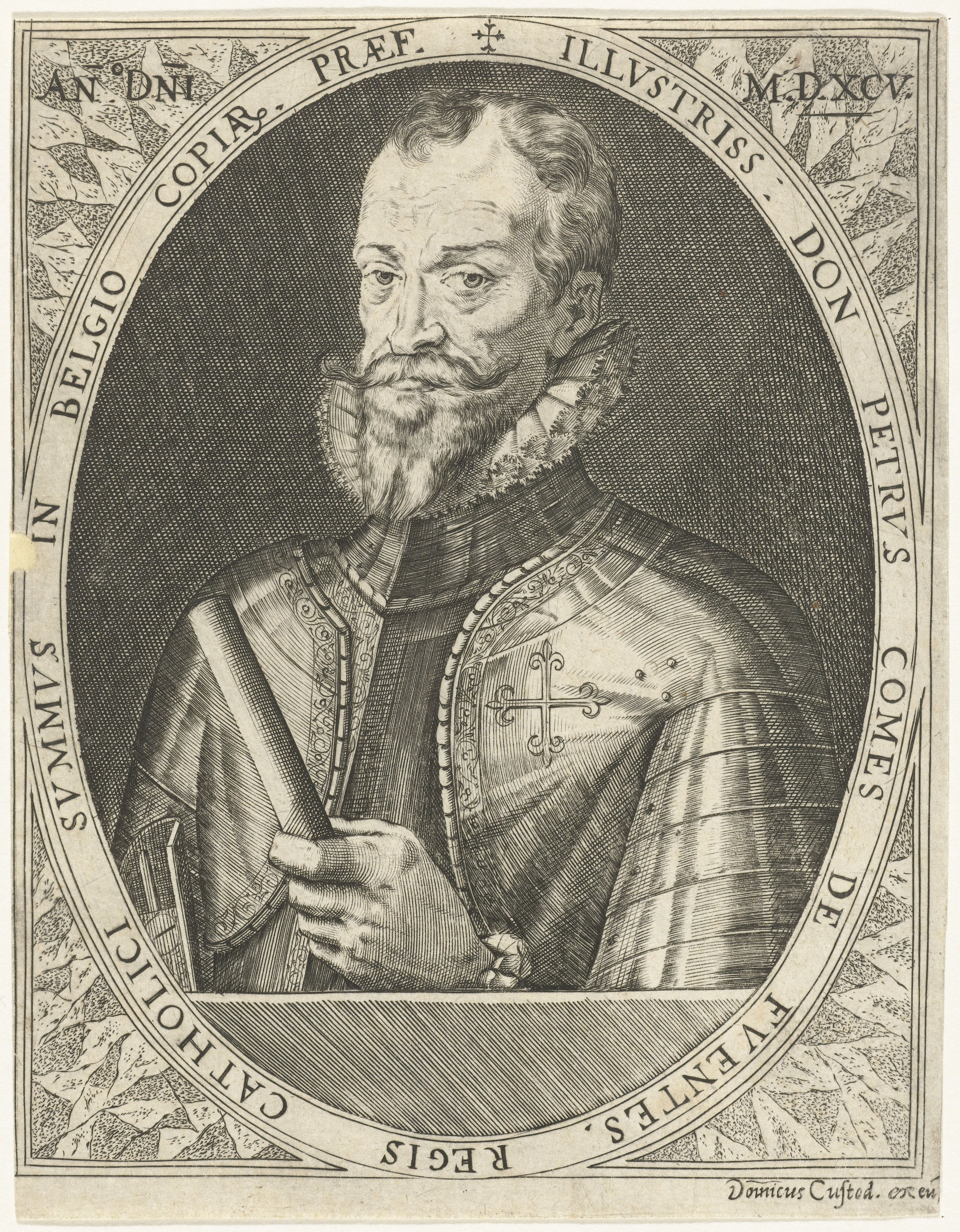 , align="center",
, align="center",
(1525-1610) , align="center", 1595 , align="center", 1596 , align="center", / , - , align="center", , align="center", Albert of Austria
, align="center", Albert of Austria
(1559-1621) , align="center", 1596 , align="center", 1598 , align="center", Nephew , - , align="center" colspan="6" , In 1598, , align="center",
, align="center",
(1566-1633) , align="center", 1621 , align="center", 1 December 1633
(death) , align="center", Aunt , align="center" rowspan="8",
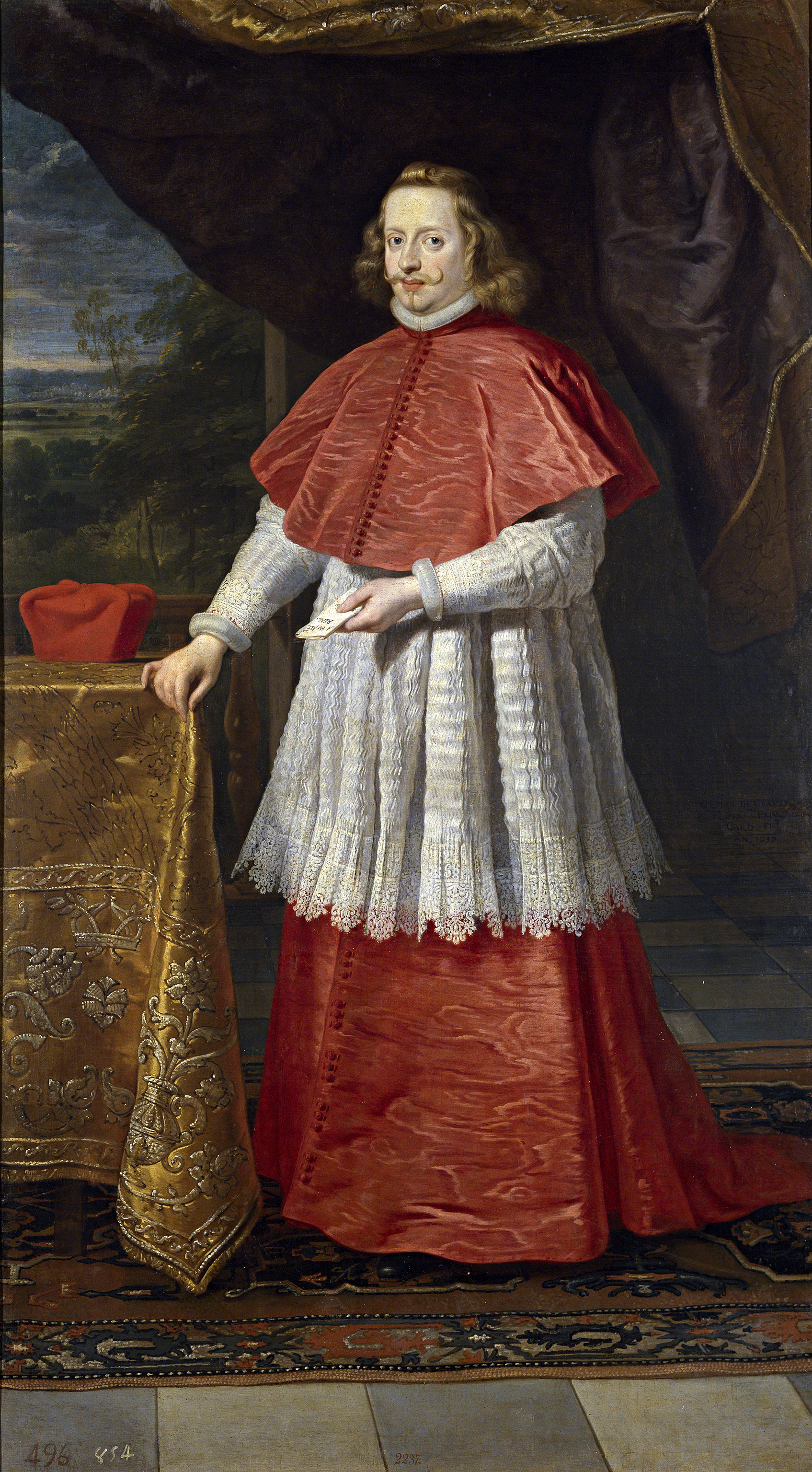 , align="center", Ferdinand of Austria
, align="center", Ferdinand of Austria
(1609/1610-1641) , align="center", 1633 , align="center", 9 November 1641
(death) , align="center", Brother , - , align="center", , align="center",
, align="center",
(1597-1651) , align="center", 1641 , align="center", 1644 , align="center", / , - , align="center", , align="center", Manuel de Moura
(1590-1651) , align="center", 1644 , align="center", 1647 , align="center", / , - , align="center", , align="center", Leopold William of Austria
, align="center", Leopold William of Austria
(1614-1662) , align="center", 1647 , align="center", 1656 , align="center", Cousin , - , align="center", , align="center",
, align="center",
(1629-1679) , align="center", 1656 , align="center", 1659 , align="center", Son , - , align="center", , align="center",
, align="center",
(1608-1668) , align="center", 1659 , align="center", 1664 , align="center", / , - , align="center" rowspan="2", , align="center" rowspan="2", Francisco de Moura
, align="center" rowspan="2", Francisco de Moura
(1610-1675) , align="center" rowspan="2", 1664 , align="center" rowspan="2", 1668 , align="center" rowspan="2", / , - , align="center" rowspan="8",
 , align="center", Íñigo Melchor de Velasco
, align="center", Íñigo Melchor de Velasco
(1608-1668) , align="center", 1668 , align="center", 1670 , align="center", / , - , align="center", , align="center", Juan Domingo de Zuñiga y Fonseca
(1640-1716) , align="center", 1670 , align="center", 1675 , align="center", / , - , align="center", , align="center", Carlos de Aragón de Gurrea
, align="center", Carlos de Aragón de Gurrea
(1634-1692) , align="center", 1675 , align="center", 1677 , align="center", / , - , align="center", , align="center",
, align="center",
(1635-1689) , align="center", 1678 , align="center", 1682 , align="center", Second Cousin , - , align="center", , align="center", Ottone Enrico del Caretto
(1629-1685) , align="center", 1682 , align="center", 1685 , align="center", / , - , align="center",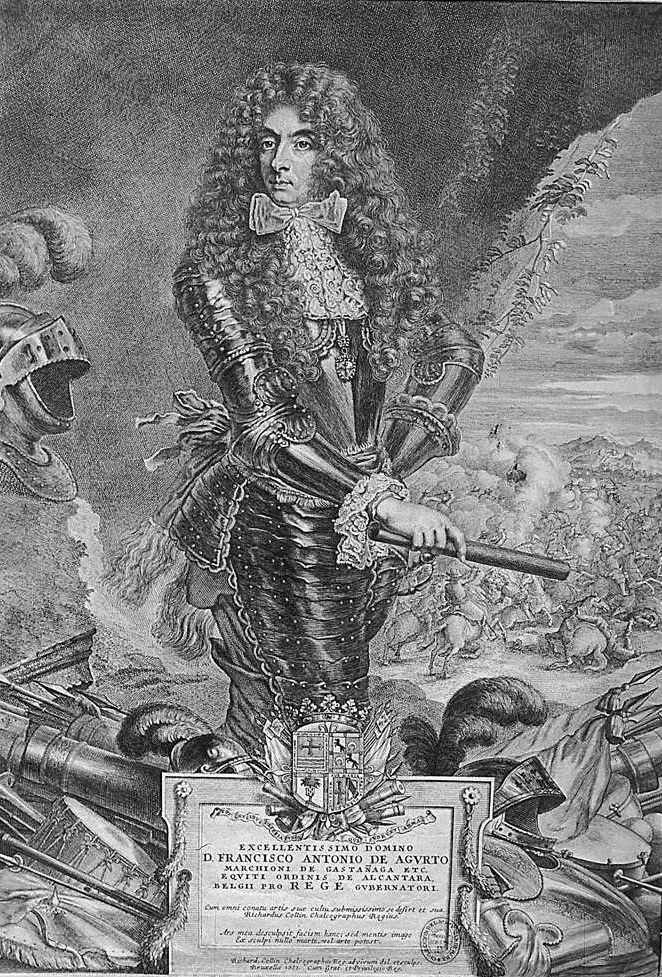 , align="center", Francisco Antonio de Agurto
, align="center", Francisco Antonio de Agurto
(1640-1702) , align="center", 1685 , align="center", 1692 , align="center", / , - , align="center" rowspan="2",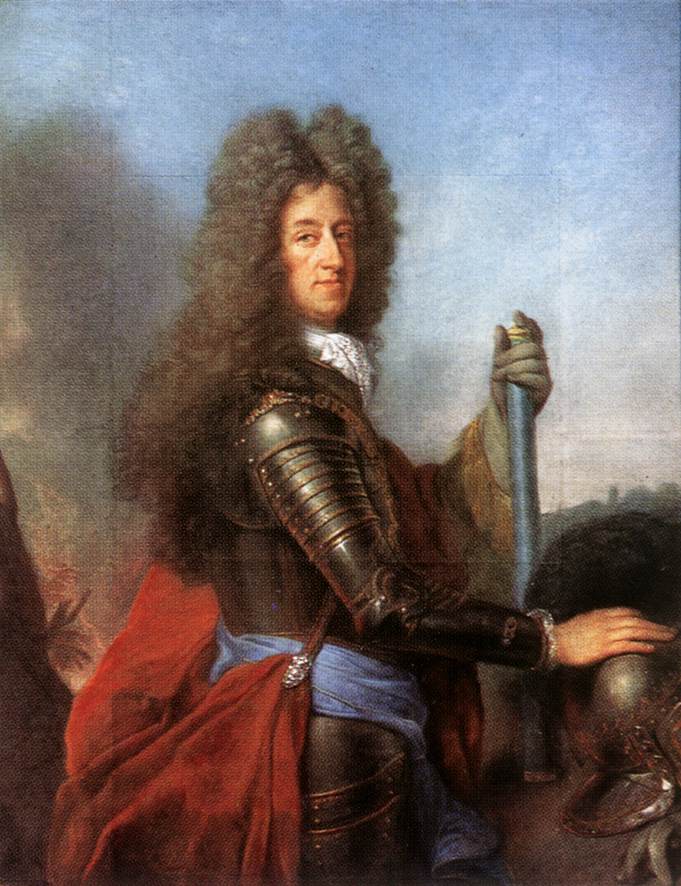 , align="center" rowspan="2",
, align="center" rowspan="2",
(1662-1726) , align="center" rowspan="2", 1692 , align="center" rowspan="2", 1706 , align="center" rowspan="1", Nephew-in-law , - , align="center" rowspan="1", Uncle , align="center" rowspan="1",
 , align="center",
, align="center",
(1663-1736) , align="center", 1716 , align="center", 1724 , align="center", Third cousin , align="center" rowspan="3",
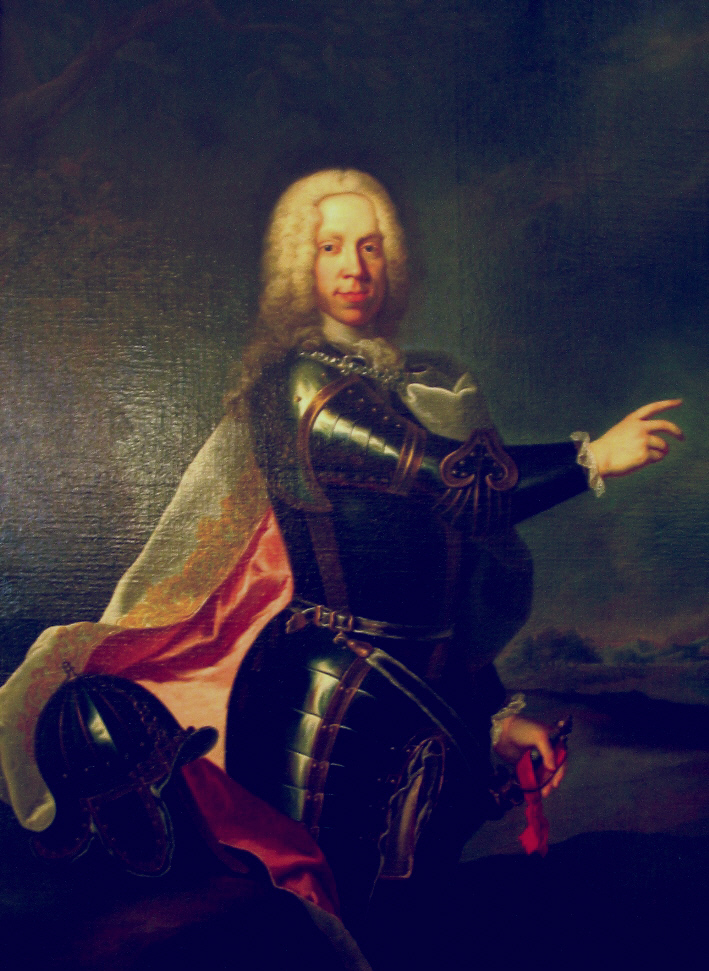 , align="center",
, align="center",
(1669-1741) , align="center", February 1725 , align="center", October 1725 , align="center", / , - , align="center" rowspan="2", , align="center" rowspan="2", Maria Elisabeth of Austria
, align="center" rowspan="2", Maria Elisabeth of Austria
(1680-1741) , align="center" rowspan="2", 1725 , align="center" rowspan="2", 26 August 1741
(death) , align="center" rowspan="1", Sister , - , align="center" rowspan="1", Aunt , align="center" rowspan="4",
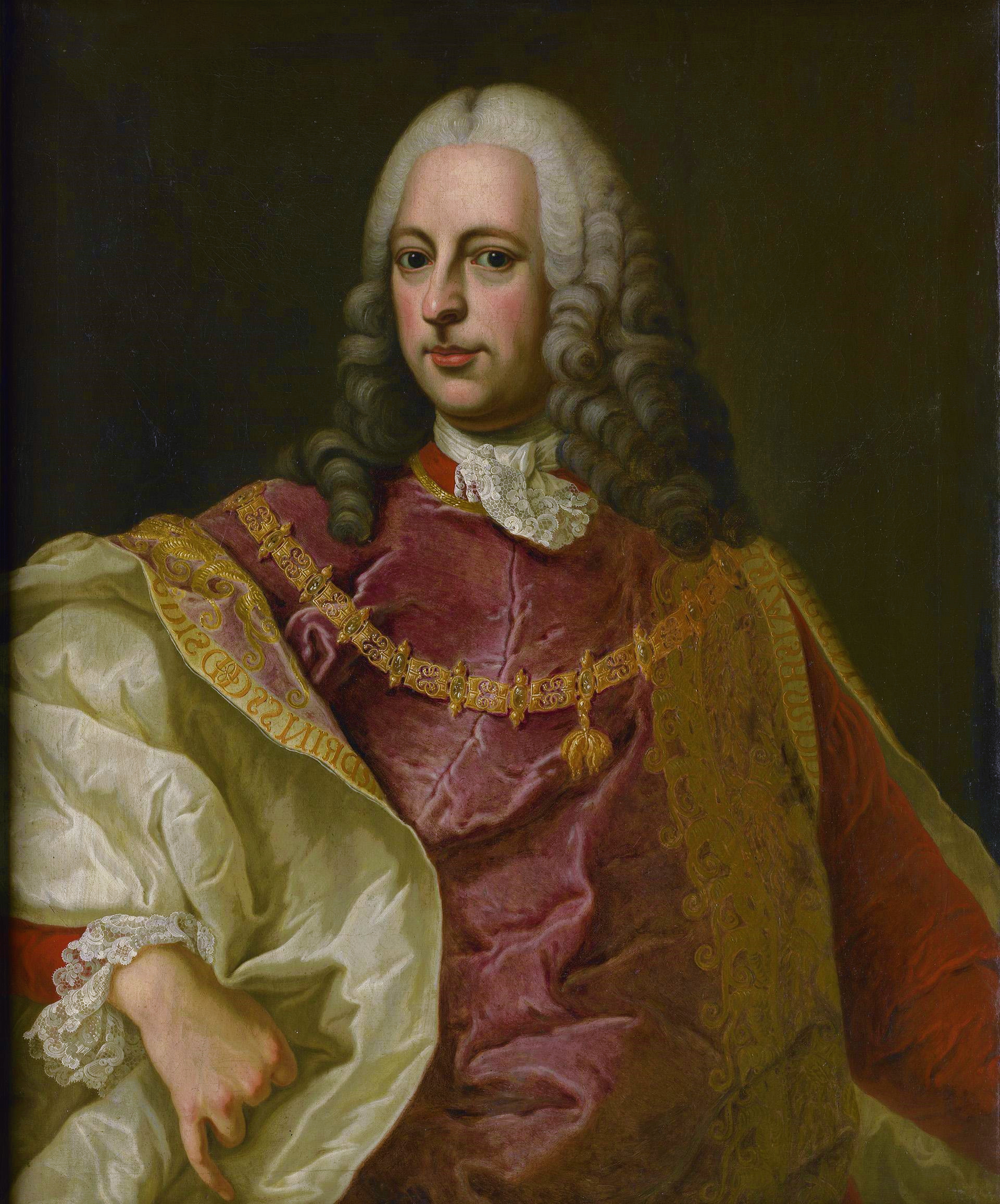 , align="center",
, align="center",
(1696-1749) , align="center", 1741 , align="center", 1744 , align="center", / , - , align="center", , align="center",
, align="center",
(1718-1744) , align="center" rowspan="2", 1744 , align="center", 16 December 1744
(death) , align="center", Sister , - , align="center",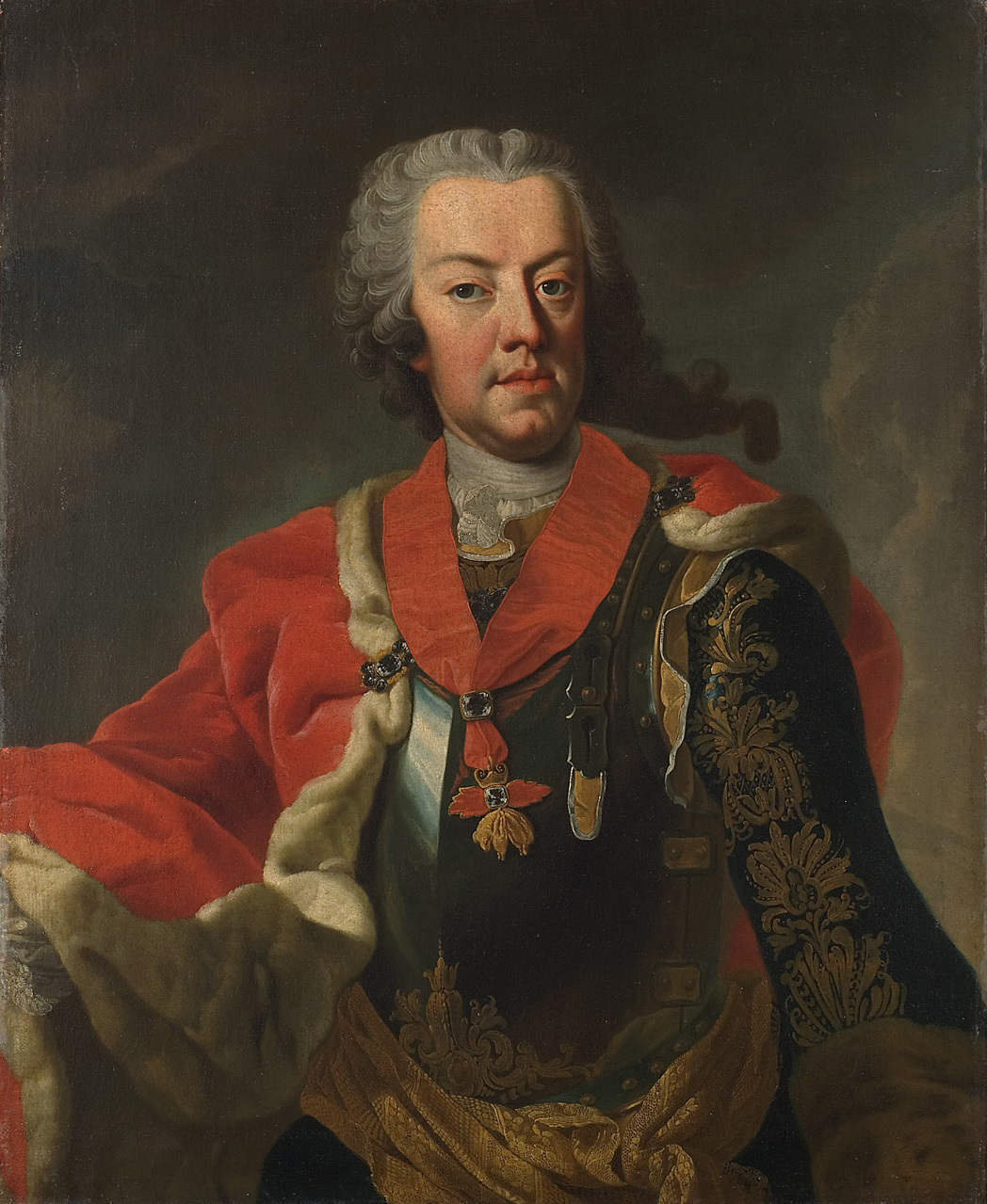 , align="center", Charles Alexander of Lorraine
, align="center", Charles Alexander of Lorraine
(1712-1780) , align="center", 4 July 1780
(death) , align="center", Brother-in-law , - , align="center" rowspan="3", , align="center" rowspan="3", Maria Christina of Austria-Lorraine
, align="center" rowspan="3", Maria Christina of Austria-Lorraine
(1742-1798)
with
Albert Casimir of Saxony
(1738-1822) , align="center" rowspan="3", 1781 , align="center" rowspan="3", 1793 , align="center" rowspan="2", Sister and brother-in-law , align="center" rowspan="1",


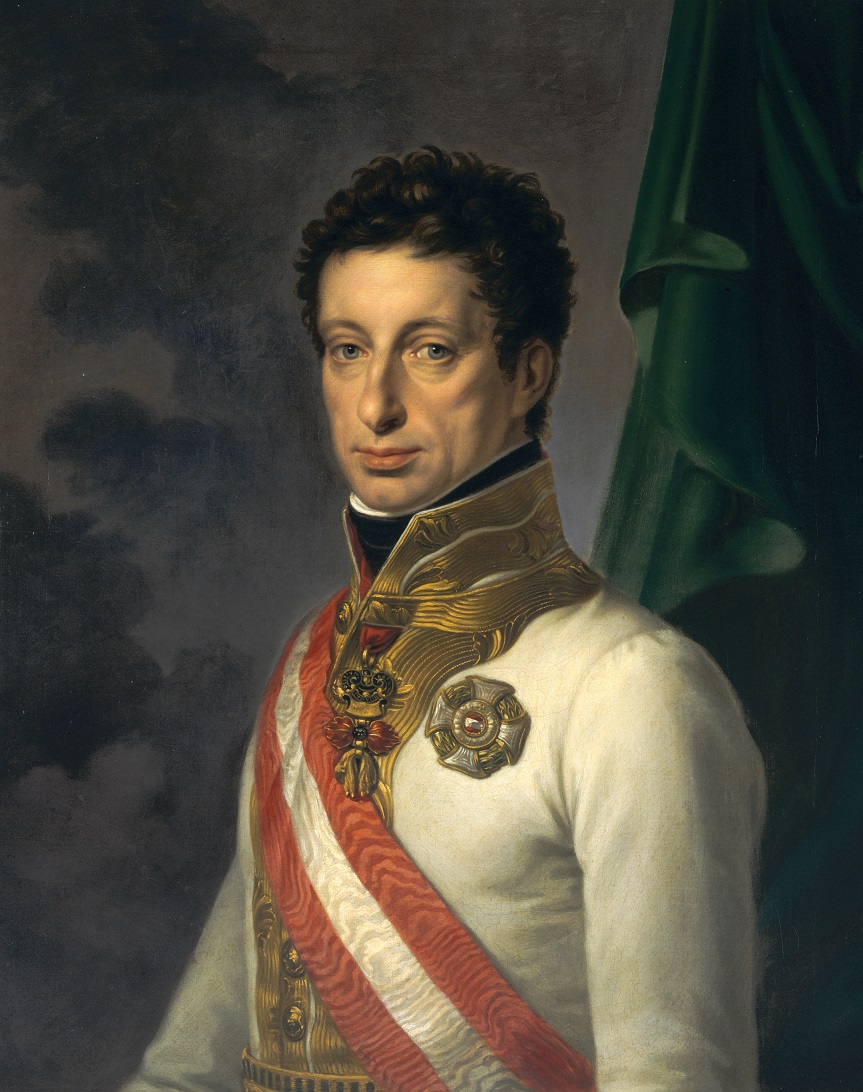 , align="center", Charles of Austria-Lorraine
, align="center", Charles of Austria-Lorraine
(1771-1847) , align="center", 1793 , align="center", 1794 , align="center", Brother Thereafter, the French revolutionaries occupied the Low Countries until 1815. The Emperor formally recognized the loss of these territories by the
Habsburg Netherlands
Habsburg Netherlands was the Renaissance period fiefs in the Low Countries held by the Holy Roman Empire's House of Habsburg. The rule began in 1482, when the last House of Valois-Burgundy, Valois-Burgundy ruler of the Netherlands, Mary of Burgu ...
was a representative appointed by the Holy Roman emperor
The Holy Roman Emperor, originally and officially the Emperor of the Romans ( la, Imperator Romanorum, german: Kaiser der Römer) during the Middle Ages, and also known as the Roman-German Emperor since the early modern period ( la, Imperat ...
(1504-1556), the king of Spain
, coatofarms = File:Coat_of_Arms_of_Spanish_Monarch.svg
, coatofarms_article = Coat of arms of the King of Spain
, image = Felipe_VI_in_2020_(cropped).jpg
, incumbent = Felipe VI
, incumbentsince = 19 Ju ...
(1556-1598, 1621-1706), and the archduke of Austria
This is a list of people who have ruled either the Margraviate of Austria, the Duchy of Austria or the Archduchy of Austria. From 976 until 1246, the margraviate and its successor, the duchy, was ruled by the House of Babenberg. At that time, t ...
(1716-1794), to administer the Burgundian inheritance of the House of Habsburg
The House of Habsburg (), alternatively spelled Hapsburg in Englishgerman: Haus Habsburg, ; es, Casa de Habsburgo; hu, Habsburg család, it, Casa di Asburgo, nl, Huis van Habsburg, pl, dom Habsburgów, pt, Casa de Habsburgo, la, Domus Hab ...
in the Low Countries
The term Low Countries, also known as the Low Lands ( nl, de Lage Landen, french: les Pays-Bas, lb, déi Niddereg Lännereien) and historically called the Netherlands ( nl, de Nederlanden), Flanders, or Belgica, is a coastal lowland region in N ...
when the monarch was absent from the territory. The role of the governor-generals significantly changed over time: initially tutors and advisors of Emperor Charles V
Charles V, french: Charles Quint, it, Carlo V, nl, Karel V, ca, Carles V, la, Carolus V (24 February 1500 – 21 September 1558) was Holy Roman Emperor and Archduke of Austria from 1519 to 1556, King of Spain ( Castile and Aragon) ...
, who lived at the Palace of Coudenberg
The Palace of Coudenberg (french: Palais du Coudenberg, nl, Coudenbergpaleis) was a royal residence situated on the Coudenberg or Koudenberg (; Dutch for "Cold Hill"), a small hill in what is today the Royal Quarter of Brussels, Belgium.
F ...
, they served as generals during the 80 Years War between the Kingdom of Spain
, image_flag = Bandera de España.svg
, image_coat = Escudo de España (mazonado).svg
, national_motto = ''Plus ultra'' (Latin)(English: "Further Beyond")
, national_anthem = (English: "Royal March")
, i ...
and the Dutch Republic
The United Provinces of the Netherlands, also known as the (Seven) United Provinces, officially as the Republic of the Seven United Netherlands (Dutch: ''Republiek der Zeven Verenigde Nederlanden''), and commonly referred to in historiography ...
. Frequently, the governor-general was a close relative of the Austrian or Spanish monarchs, though at other times Spanish or German noblemen filled the role. The governor-general was usually based in Brussels
Brussels (french: Bruxelles or ; nl, Brussel ), officially the Brussels-Capital Region (All text and all but one graphic show the English name as Brussels-Capital Region.) (french: link=no, Région de Bruxelles-Capitale; nl, link=no, Bruss ...
.
List of governors
{, width=80% class="wikitable" !Picture !Name !Took office !Left office !Relationship to monarch !Appointed by , - , align="center", , align="center",
, align="center", Engelbert II of Nassau
Engelbert II of Nassau, ''Engelbrecht'' in Dutch (17 May 1451 – 31 May 1504), was count of Nassau and Vianden and lord of Breda, Lek, Diest, Roosendaal, Nispen and Wouw. He was a soldier and courtier, for some time leader of the Privy counc ...
(1451-1504) , align="center", 1501 , align="center", 1504 , align="center", / , align="center" rowspan="1",

Maximilian I, Holy Roman Emperor
Maximilian I (22 March 1459 – 12 January 1519) was King of the Romans from 1486 and Holy Roman Emperor from 1508 until his death. He was never crowned by the pope, as the journey to Rome was blocked by the Venetians. He proclaimed himself El ...
for Philip the Handsome
Philip the Handsome, es, Felipe, french: Philippe, nl, Filips (22 July 1478 – 25 September 1506), also called the Fair, was ruler of the Burgundian Netherlands and titular ruler, titular Duke of Burgundy from 1482 to 1506, as well as the fir ...
, -
, align="center",
, align="center", William de Croÿ
William II de Croÿ, Lord of Chièvres (1458 – 28 May 1521) (also known as: Guillaume II de Croÿ, sieur de Chièvres in French; Guillermo II de Croÿ, señor de Chièvres, Xevres or Xebres in Spanish; Willem II van Croÿ, heer van Chiè ...
(1458-1521) , align="center", 1504 , align="center", 1507 , align="center", / , align="center" rowspan="2",

 Maximilian I for Charles of Ghent
, -
, align="center",
Maximilian I for Charles of Ghent
, -
, align="center",  , align="center", Margaret of Austria
, align="center", Margaret of Austria(1480-1530) , align="center", 1507 , align="center", 1 December 1530
(death) , align="center", Aunt of Charles , - , align="center" colspan="6" , Charles became Duke of Burgundy in 1506 (emancipated in 1515), King of Spain and the Two Sicilies in 1516, Archduke of Austria and Holy Roman Emperor as
Charles V Charles V may refer to:
* Charles V, Holy Roman Emperor (1500–1558)
* Charles V of Naples (1661–1700), better known as Charles II of Spain
* Charles V of France (1338–1380), called the Wise
* Charles V, Duke of Lorraine (1643–1690)
* Infan ...
in 1519 at the death of Maximilian.
, -
, align="center",  , align="center", Mary of Austria
, align="center", Mary of Austria(1505-1558) , align="center", January 1531 , align="center", October 1555 , align="center", Sister , align="center" rowspan="1",

Charles V, Holy Roman Emperor
Charles V, french: Charles Quint, it, Carlo V, nl, Karel V, ca, Carles V, la, Carolus V (24 February 1500 – 21 September 1558) was Holy Roman Emperor and Archduke of Austria from 1519 to 1556, King of Spain (Crown of Castile, Castil ...
, -
, align="center",  , align="center", Emmanuel Philibert of Savoy
, align="center", Emmanuel Philibert of Savoy(1528-1580) , align="center", 1555 , align="center", 1559 , align="center", Cousin of Philip , align="center" rowspan="1",

 Charles V for his son Philip.
, -
, align="center" colspan="6" , In 1556, Philip V, Duke of Burgundy, became king of Spain as
Charles V for his son Philip.
, -
, align="center" colspan="6" , In 1556, Philip V, Duke of Burgundy, became king of Spain as Philip II Philip II may refer to:
* Philip II of Macedon (382–336 BC)
* Philip II (emperor) (238–249), Roman emperor
* Philip II, Prince of Taranto (1329–1374)
* Philip II, Duke of Burgundy (1342–1404)
* Philip II, Duke of Savoy (1438-1497)
* Philip ...
, thereby bringing the Habsburg Netherlands under Spanish
Spanish might refer to:
* Items from or related to Spain:
**Spaniards are a nation and ethnic group indigenous to Spain
**Spanish language, spoken in Spain and many Latin American countries
**Spanish cuisine
Other places
* Spanish, Ontario, Cana ...
control.
, -
, align="center",  , align="center",
, align="center", Margaret of Parma
Margaret of Parma (; 5 July 1522 – 18 January 1586) was Governor of the Netherlands from 1559 to 1567 and from 1578 to 1582. She was the illegitimate daughter of the then 22-year-old Holy Roman Emperor Charles V and Johanna Maria van der G ...
(1522-1586) , align="center", 1559 , align="center", 1567 , align="center", Half-sister , align="center" rowspan="9",

Philip II of Spain
Philip II) in Spain, while in Portugal and his Italian kingdoms he ruled as Philip I ( pt, Filipe I). (21 May 152713 September 1598), also known as Philip the Prudent ( es, Felipe el Prudente), was King of Spain from 1556, King of Portugal from ...
, -
, align="center",  , align="center",
, align="center", Fernando Álvarez de Toledo, 3rd Duke of Alba
Fernando Álvarez de Toledo y Pimentel, 3rd Duke of Alba (29 October 150711 December 1582), known as the Grand Duke of Alba (, pt, Grão Duque de Alba) in Spain and Portugal and as the Iron Duke ( or shortly 'Alva') in the Netherlands, was a Sp ...
(1507-1582) , align="center", 1567 , align="center", 1573 , align="center", / , - , align="center",
 , align="center",
, align="center", Luis de Requesens y Zúñiga
Luis de Requesens y Zúñiga (25 August 1528 – 5 March 1576) was a Spanish general, sailor, diplomat and politician. He served as governor of the Duchy of Milan (1572–1573) and as governor of the Spanish Netherlands (1573–1576).
Biography
...
(1528-1576) , align="center", 1573 , align="center", 5 March 1576
(death) , align="center", / , - , align="center",
 , align="center",
, align="center", John of Austria
John of Austria ( es, Juan, link=no, german: Johann; 24 February 1547 – 1 October 1578) was the natural son born to Holy Roman Emperor Charles V late in life when he was a widower. Charles V met his son only once, recognizing him in a secret ...
(1547-1578) , align="center", 1576 , align="center", 1 October 1578
(death) , align="center", Half-brother , - , align="center",
 , align="center",
, align="center", Alexander Farnese, Duke of Parma
Alexander Farnese ( it, Alessandro Farnese, es, Alejandro Farnesio; 27 August 1545 – 3 December 1592) was an Italian noble and condottiero and later a general of the Spanish army, who was Duke of Parma, Piacenza and Castro from 1586 to 1592 ...
(1545-1592) , align="center", 1578 , align="center", 3 December 1592
(death) , align="center", Half-nephew , - , align="center",
 , align="center",
, align="center", Peter Ernst I von Mansfeld-Vorderort
Peter Ernst I von Mansfeld-Vorderort (20 July 1517 – 25 May 1604) was a Spanish Empire, Spanish Imperial army commander of Germans, German origin and Governor of the Spanish Netherlands from 1592 to 1594.
Born in Heldrungen, Saxony, he was th ...
(1517-1604) , align="center", 1592 , align="center", 1594 , align="center", / , - , align="center",
 , align="center", Ernest of Austria
, align="center", Ernest of Austria(1553-1595) , align="center", 1594 , align="center", 20 February 1595
(death) , align="center", Nephew , - , align="center",
 , align="center",
, align="center", Pedro Henriquez de Acevedo, Count of Fuentes
Pedro Henriquez d'Azevedo y Alvarez de Toledo, Count of Fuentes de Valdepero (1525 in Zamora, Spain – 22 July 1610 in Milan, Italy) was a Spanish general and statesman.
Biography
Born at Zamora, he was a page at the court of Philip II of Spai ...
(1525-1610) , align="center", 1595 , align="center", 1596 , align="center", / , - , align="center",
 , align="center", Albert of Austria
, align="center", Albert of Austria(1559-1621) , align="center", 1596 , align="center", 1598 , align="center", Nephew , - , align="center" colspan="6" , In 1598,
Philip II of Spain
Philip II) in Spain, while in Portugal and his Italian kingdoms he ruled as Philip I ( pt, Filipe I). (21 May 152713 September 1598), also known as Philip the Prudent ( es, Felipe el Prudente), was King of Spain from 1556, King of Portugal from ...
ceded the Netherlands to his daughter Isabella Clara Eugenia
Isabella Clara Eugenia ( es, link=no, Isabel Clara Eugenia; 12 August 1566 – 1 December 1633), sometimes referred to as Clara Isabella Eugenia, was sovereign of the Spanish Netherlands in the Low Countries and the north of modern France with ...
and nephew Albert
Albert may refer to:
Companies
* Albert (supermarket), a supermarket chain in the Czech Republic
* Albert Heijn, a supermarket chain in the Netherlands
* Albert Market, a street market in The Gambia
* Albert Productions, a record label
* Alber ...
, who married the next year. They reigned together until his death, when the Netherlands passed to their nephew, Philip IV of Spain
Philip IV ( es, Felipe, pt, Filipe; 8 April 160517 September 1665), also called the Planet King (Spanish: ''Rey Planeta''), was King of Spain from 1621 to his death and (as Philip III) King of Portugal from 1621 to 1640. Philip is remembered f ...
, in whose name Isabella Clara Eugenia governed the countries until her death.
, -
, align="center",  , align="center",
, align="center", Isabella Clara Eugenia of Austria
Isabella Clara Eugenia ( es, link=no, Isabel Clara Eugenia; 12 August 1566 – 1 December 1633), sometimes referred to as Clara Isabella Eugenia, was sovereign of the Spanish Netherlands in the Low Countries and the north of modern France with ...
(1566-1633) , align="center", 1621 , align="center", 1 December 1633
(death) , align="center", Aunt , align="center" rowspan="8",

Philip IV of Spain
Philip IV ( es, Felipe, pt, Filipe; 8 April 160517 September 1665), also called the Planet King (Spanish: ''Rey Planeta''), was King of Spain from 1621 to his death and (as Philip III) King of Portugal from 1621 to 1640. Philip is remembered f ...
, -
, align="center",  , align="center", Ferdinand of Austria
, align="center", Ferdinand of Austria(1609/1610-1641) , align="center", 1633 , align="center", 9 November 1641
(death) , align="center", Brother , - , align="center",
 , align="center",
, align="center", Francisco de Melo
Dom Francisco de Melo (1597 – 18 December 1651) was a Portuguese nobleman who served as a Spanish general during the Thirty Years' War.
Biography
Francisco was born in Estremoz, Portugal. From 1632 to 1636 he had been Spanish ambassador to th ...
(1597-1651) , align="center", 1641 , align="center", 1644 , align="center", / , - , align="center", , align="center", Manuel de Moura
(1590-1651) , align="center", 1644 , align="center", 1647 , align="center", / , - , align="center",
 , align="center", Leopold William of Austria
, align="center", Leopold William of Austria(1614-1662) , align="center", 1647 , align="center", 1656 , align="center", Cousin , - , align="center",
 , align="center",
, align="center", John of Austria the Younger
John Joseph of Austria or John of Austria (the Younger) ( es, Don Juan José de Austria; 7 April 1629 – 17 September 1679) was a Spanish general and political figure. He was the only illegitimate son of Philip IV of Spain to be acknowledged b ...
(1629-1679) , align="center", 1656 , align="center", 1659 , align="center", Son , - , align="center",
 , align="center",
, align="center", Luis de Benavides Carrillo
Luis is a given name. It is the Spanish language, Spanish form of the originally Germanic language, Germanic name or . Other Iberian Romance languages have comparable forms: (with an accent mark on the i) in Portuguese language, Portuguese and ...
(1608-1668) , align="center", 1659 , align="center", 1664 , align="center", / , - , align="center" rowspan="2",
 , align="center" rowspan="2", Francisco de Moura
, align="center" rowspan="2", Francisco de Moura(1610-1675) , align="center" rowspan="2", 1664 , align="center" rowspan="2", 1668 , align="center" rowspan="2", / , - , align="center" rowspan="8",

Charles II of Spain
Charles II of Spain (''Spanish: Carlos II,'' 6 November 1661 – 1 November 1700), known as the Bewitched (''Spanish: El Hechizado''), was the last Habsburg ruler of the Spanish Empire. Best remembered for his physical disabilities and the War o ...
, -
, align="center", (1608-1668) , align="center", 1668 , align="center", 1670 , align="center", / , - , align="center", , align="center", Juan Domingo de Zuñiga y Fonseca
(1640-1716) , align="center", 1670 , align="center", 1675 , align="center", / , - , align="center",
 , align="center", Carlos de Aragón de Gurrea
, align="center", Carlos de Aragón de Gurrea(1634-1692) , align="center", 1675 , align="center", 1677 , align="center", / , - , align="center",
 , align="center",
, align="center", Alexander Farnese Alessandro Farnese may refer to:
* Pope Paul III (1468–1549), Roman Catholic Bishop of Rome
*Alessandro Farnese (cardinal) (1520–1589), Paul's grandson, Roman Catholic bishop and cardinal-nephew
* Alexander Farnese, Duke of Parma (1545–1592), ...
(1635-1689) , align="center", 1678 , align="center", 1682 , align="center", Second Cousin , - , align="center", , align="center", Ottone Enrico del Caretto
(1629-1685) , align="center", 1682 , align="center", 1685 , align="center", / , - , align="center",
 , align="center", Francisco Antonio de Agurto
, align="center", Francisco Antonio de Agurto(1640-1702) , align="center", 1685 , align="center", 1692 , align="center", / , - , align="center" rowspan="2",
 , align="center" rowspan="2",
, align="center" rowspan="2", Maximilian II Emanuel of Bavaria
Maximilian, Maximillian or Maximiliaan (Maximilien in French) is a male given name.
The name " Max" is considered a shortening of "Maximilian" as well as of several other names.
List of people
Monarchs
*Maximilian I, Holy Roman Emperor (1459� ...
(1662-1726) , align="center" rowspan="2", 1692 , align="center" rowspan="2", 1706 , align="center" rowspan="1", Nephew-in-law , - , align="center" rowspan="1", Uncle , align="center" rowspan="1",

Philip V of Spain
Philip V ( es, Felipe; 19 December 1683 – 9 July 1746) was King of Spain from 1 November 1700 to 14 January 1724, and again from 6 September 1724 to his death in 1746. His total reign of 45 years is the longest in the history of the Spanish mon ...
, -
, align="center" colspan="6" , Following the War of the Spanish Succession
The War of the Spanish Succession was a European great power conflict that took place from 1701 to 1714. The death of childless Charles II of Spain in November 1700 led to a struggle for control of the Spanish Empire between his heirs, Phil ...
, Holy Roman Emperor Charles VI
Charles VI (german: Karl; la, Carolus; 1 October 1685 – 20 October 1740) was Holy Roman Emperor and ruler of the Austrian Habsburg monarchy from 1711 until his death, succeeding his elder brother, Joseph I. He unsuccessfully claimed the thron ...
became ruler of the Austrian Netherlands
The Austrian Netherlands nl, Oostenrijkse Nederlanden; french: Pays-Bas Autrichiens; german: Österreichische Niederlande; la, Belgium Austriacum. was the territory of the Burgundian Circle of the Holy Roman Empire between 1714 and 1797. The p ...
.
, -
, align="center", Eugene of Savoy
Prince Eugene Francis of Savoy–Carignano, (18 October 1663 – 21 April 1736) better known as Prince Eugene, was a field marshal in the army of the Holy Roman Empire and of the Austrian Habsburg dynasty during the 17th and 18th centuries. He ...
(1663-1736) , align="center", 1716 , align="center", 1724 , align="center", Third cousin , align="center" rowspan="3",

Charles VI, Holy Roman Emperor
, house = Habsburg
, spouse =
, issue =
, issue-link = #Children
, issue-pipe =
, father = Leopold I, Holy Roman Emperor
, mother = Eleonore Magdalene of Neuburg
, birth_date ...
, -
, align="center",  , align="center",
, align="center", Wirich Philipp von Daun Count Wirich Philipp von Daun (19 October 1669 – 30 July 1741) was an Austrian Field Marshal of the Imperial Army in the War of Spanish Succession, and father of the better known Leopold Josef Graf Daun. In 1710 he was created Prince of Teano.
B ...
(1669-1741) , align="center", February 1725 , align="center", October 1725 , align="center", / , - , align="center" rowspan="2",
 , align="center" rowspan="2", Maria Elisabeth of Austria
, align="center" rowspan="2", Maria Elisabeth of Austria(1680-1741) , align="center" rowspan="2", 1725 , align="center" rowspan="2", 26 August 1741
(death) , align="center" rowspan="1", Sister , - , align="center" rowspan="1", Aunt , align="center" rowspan="4",

Maria Theresa of Austria
Maria Theresa Walburga Amalia Christina (german: Maria Theresia; 13 May 1717 – 29 November 1780) was ruler of the Habsburg monarchy, Habsburg dominions from 1740 until her death in 1780, and the only woman to hold the position ''suo jure'' ( ...
, -
, align="center",  , align="center",
, align="center", Friedrich August von Harrach-Rohrau
Count Friedrich August von Harrach-Rohrau, (Vienna, 8 June 1696 – Vienna, 4 June 1749), was plenipotentiary minister of the Austrian Netherlands (1732–1741) and became Governor-General ''ad interim'' in 1741–1744.
He was also High Chan ...
(1696-1749) , align="center", 1741 , align="center", 1744 , align="center", / , - , align="center",
 , align="center",
, align="center", Maria Anna of Austria
Maria Anna of Austria (Maria Anna Josepha Antonia Regina; 7 September 1683 – 14 August 1754) was Queen of Portugal as the wife of King John V of Portugal. She served as the regent of Portugal from 1742 until 1750 during the illness of her hus ...
(1718-1744) , align="center" rowspan="2", 1744 , align="center", 16 December 1744
(death) , align="center", Sister , - , align="center",
 , align="center", Charles Alexander of Lorraine
, align="center", Charles Alexander of Lorraine(1712-1780) , align="center", 4 July 1780
(death) , align="center", Brother-in-law , - , align="center" rowspan="3",
 , align="center" rowspan="3", Maria Christina of Austria-Lorraine
, align="center" rowspan="3", Maria Christina of Austria-Lorraine(1742-1798)
with
Albert Casimir of Saxony
(1738-1822) , align="center" rowspan="3", 1781 , align="center" rowspan="3", 1793 , align="center" rowspan="2", Sister and brother-in-law , align="center" rowspan="1",

Joseph II, Holy Roman Emperor
Joseph II (German: Josef Benedikt Anton Michael Adam; English: ''Joseph Benedict Anthony Michael Adam''; 13 March 1741 – 20 February 1790) was Holy Roman Emperor from August 1765 and sole ruler of the Habsburg lands from November 29, 1780 unt ...
, -
, align="center" rowspan="1", 
Leopold II, Holy Roman Emperor
, house =Habsburg-Lorraine
, father = Francis I, Holy Roman Emperor
, mother = Maria Theresa of Hungary and Bohemia
, religion =Roman Catholicism
, succession1 =Grand Duke of Tuscany
, reign1 =18 A ...
, -
, align="center" rowspan="1", Aunt and uncle
, align="center" rowspan="2", 
Francis II, Holy Roman Emperor
Francis II (german: Franz II.; 12 February 1768 – 2 March 1835) was the last Holy Roman Emperor (from 1792 to 1806) and the founder and Emperor of the Austrian Empire, from 1804 to 1835. He assumed the title of Emperor of Austria in response ...
, -
, align="center",  , align="center", Charles of Austria-Lorraine
, align="center", Charles of Austria-Lorraine(1771-1847) , align="center", 1793 , align="center", 1794 , align="center", Brother Thereafter, the French revolutionaries occupied the Low Countries until 1815. The Emperor formally recognized the loss of these territories by the
Treaty of Lunéville
The Treaty of Lunéville (or Peace of Lunéville) was signed in the Treaty House of Lunéville on 9 February 1801. The signatory parties were the French Republic and Emperor Francis II, who signed on his own behalf as ruler of the hereditary doma ...
of 1801. At the Congress of Vienna
The Congress of Vienna (, ) of 1814–1815 was a series of international diplomatic meetings to discuss and agree upon a possible new layout of the European political and constitutional order after the downfall of the French Emperor Napoleon B ...
, in 1815, the Low Countries were re-united in a personal union under the House of Orange-Nassau
The House of Orange-Nassau (Dutch: ''Huis van Oranje-Nassau'', ) is the current reigning house of the Netherlands. A branch of the European House of Nassau, the house has played a central role in the politics and government of the Netherlands ...
. In 1830, Belgium
Belgium, ; french: Belgique ; german: Belgien officially the Kingdom of Belgium, is a country in Northwestern Europe. The country is bordered by the Netherlands to the north, Germany to the east, Luxembourg to the southeast, France to th ...
declared its independence.
See also
*Lord Chamberlain of the Archduchess Lord Chamberlain of the Archduchess was a ceremonial function at the imperial court of Brussels.
This position was given to important members of the Nobility of Brabant and Flanders, in service of Prince Charles Alexander of Lorraine and archduche ...
* List of plenipotentiaries of Austrian Netherlands In the eighteenth century, it became the norm for the Archduke of Austria, who was lord of the Netherlands by inheritance, to appoint a diplomat with the rank of minister plenipotentiary to represent his interests at the court of the governor-gener ...
* List of rulers of the Netherlands
The Netherlands, or Low Countries, possessed clearly delineated boundaries only after 1500. Still in many respects they demonstrated common traits and underwent similar development that differentiated them from surrounding countries. The social, ...
Netherlands
)
, anthem = ( en, "William of Nassau")
, image_map =
, map_caption =
, subdivision_type = Sovereign state
, subdivision_name = Kingdom of the Netherlands
, established_title = Before independence
, established_date = Spanish Netherl ...
Politicians of the Austrian Netherlands
Habsburg
The House of Habsburg (), alternatively spelled Hapsburg in Englishgerman: Haus Habsburg, ; es, Casa de Habsburgo; hu, Habsburg család, it, Casa di Asburgo, nl, Huis van Habsburg, pl, dom Habsburgów, pt, Casa de Habsburgo, la, Domus Hab ...